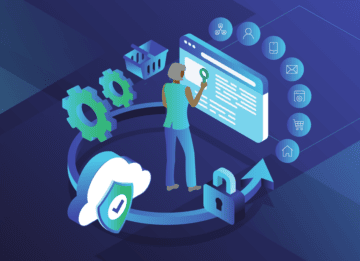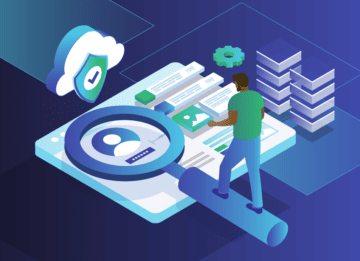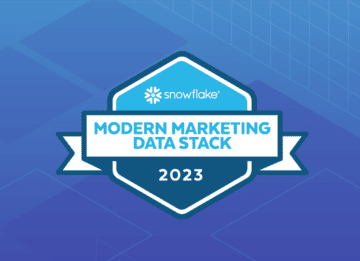
Who Is My Customer? Unveiling Significant Audience Insights
Successful brands are taking the time to personalize every step of the customer journey and create consistent experiences across every interaction with their company. These brands are being thoughtful of customer interactions and using dynamic personalization to supplement and create a unique experience for their customers.
The first steps to beginning a customer-centric marketing approach are to resolve the data fragments inside your organization. Then, you can further enrich customer records with meaningful, contextual data about those individuals to create a unified, single customer view.
Great. And then what?
In order to make these new data attributes actionable, brands have to use these available insights to understand, segment, and activate individual consumers. Understanding your current customers can help provide clarity for acquiring new customers with a propensity to spend money with your brand. Getting statistically significant information about your customers helps increase the ROAS of your marketing campaigns and helps you to understand where to start spending your marketing dollars.
In 2017, Winterberry Group reported that $3.5 billion in audience data will be used for an omnichannel strategy by U.S. companies. To make the most of audience data investment, brands need to find the segments of their existing customers to control media targeting, reach, and frequency.
Here’s how to get started.
Understand the customer attributes that drive your business
About one out of five marketing and CX professionals feel they will ‘never truly understand’ why their customers buy. To reveal your high-value customers, you first need to use enriched data attributes (like demographics, census data, household, travel, shopping habits, purchases, social affinities, to name a few) to learn the patterns, behaviors, demographics, and interests that these customers share.
Let’s take a look at a fictional direct to consumer brand, GoShop.
GoShop believed its high-value customers were savvy female shoppers aged 20-29 that lived in metropolitan areas. In its six years as a company, GoShop’s digital advertising, social advertising, and email marketing have helped generate revenue and increase brand awareness. However, as it looks to continue to grow and find new customers, its marketing efforts into new channels have been negligible.
Without a holistic view of their current customers, GoShop did not have the ability to optimize products and pricing based on previous purchases, economic status, age, or affinity. Nor was the brand able to leverage customer behavior to deliver real-time personalization at the time of interaction, across channels.
To streamline their campaigns and learn where to best spend their marketing dollars, GoShop wanted to determine the best channels and most relevant marketing messages that will improve ROI while keeping customer acquisition costs (CAC) low.
Engaging with a vendor that could perform audience modeling, audience profiling, and acquisition optimization, GoShop discovered the statistically significant information that enabled new levels of customer understanding and engagement.
Looking within its current customer file, the vendor provided GoShop with five different audience segments:
- Individuals with strong acquisition potential
- Individuals with good conversion opportunities
- Most loyal and high-value customers
- Customers with the potential to increase spend with GoShop
- Individuals with limited potential
Improve targeting with contextual insights and accurate data
The new model showed that GoShop had misinterpreted the metrics that provided the initial hypothesis that its high-value customers were female savvy shoppers aged 20-29 in metropolitan areas.
With the additional layers of household, finance, lifestyle, behavior, and social affinities data, the GoShop team was able to determine their high-value customers were actually females age 25-34, likely to be married and own a pet, and unlikely to travel.
Now that the GoShop team has an idea of who their high-value customers are, they can begin creating marketing programs that reach them in their preferred channels. Testing an omnichannel approach that includes direct mail and digital media platforms can allow GoShop to find which channel leads to the most conversions. Segments can be created and pushed to audience on-boarders, directly into media platforms and direct mail execution.
Use new audience segments to test and learn
As IAB stated, “2019 won’t yet truly be the ‘Year of Attribution,’ but identity resolution is moving the market closer to solving for that long‐standing challenge.”
With an accurate customer record, brands can start using audience analysis and audience activation recommendations to drive more revenue and prove the validity of their marketing activities.
Are you ready to find meaningful audience segments in your customer file?
Recent Blogs
-
 September 21, 2023 Discover How FullContact is Building Trusted Customer Relationships through Snowflake's Native Application Framework Customer 360, Website Recognition, Identity Resolution
September 21, 2023 Discover How FullContact is Building Trusted Customer Relationships through Snowflake's Native Application Framework Customer 360, Website Recognition, Identity Resolution -
 September 20, 2023 Transform Your Customer Experience with FullContact Customer Recognition and Boost Your Conversions Website Recognition, Identity Resolution
September 20, 2023 Transform Your Customer Experience with FullContact Customer Recognition and Boost Your Conversions Website Recognition, Identity Resolution -
 September 14, 2023 FullContact Recognized as a Leader in Snowflake’s Modern Marketing Data Stack Report FullContact News, Partnership
September 14, 2023 FullContact Recognized as a Leader in Snowflake’s Modern Marketing Data Stack Report FullContact News, Partnership
